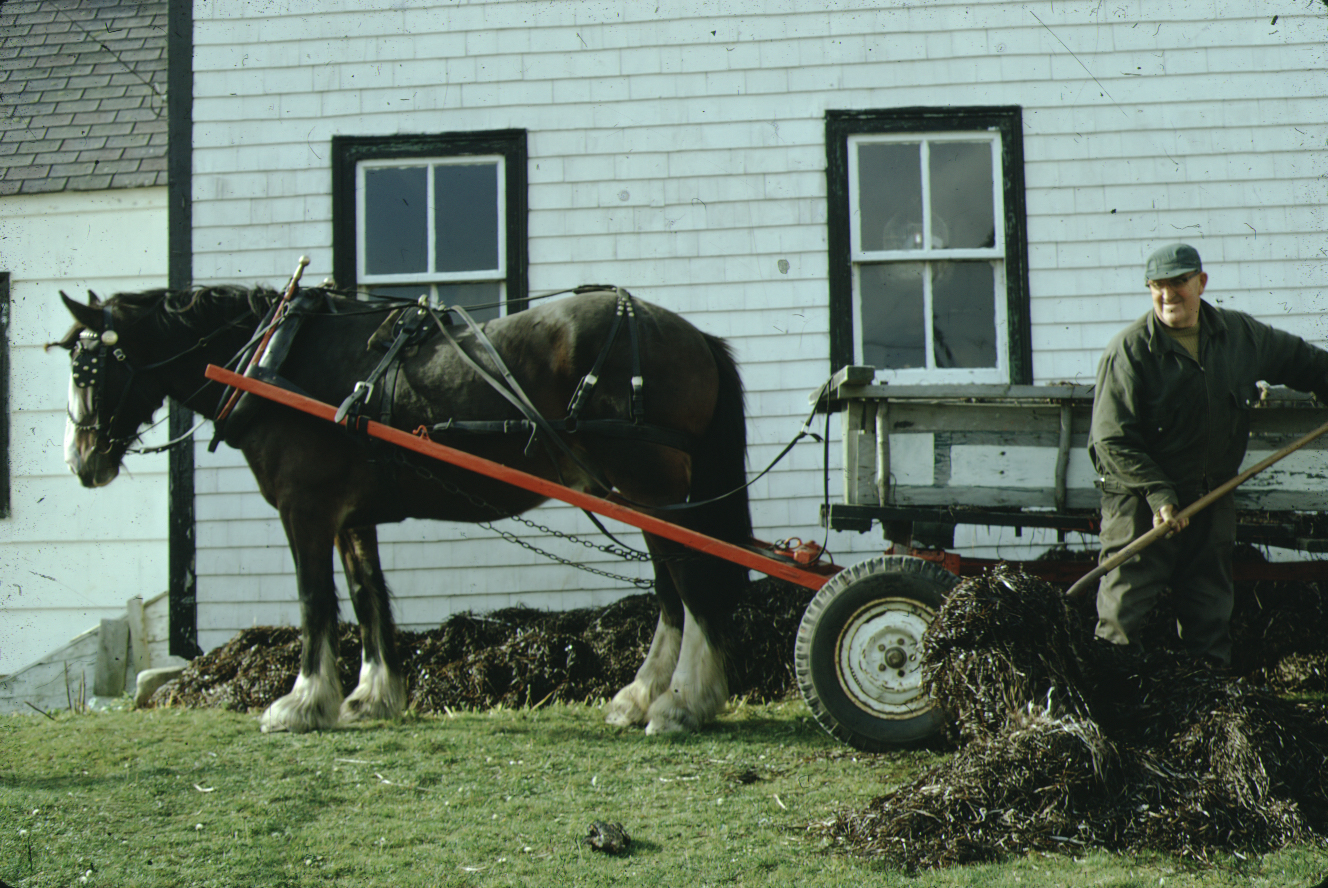Eel Grass

1973. Rosemary Eaton Fonds. Cole Harbour Rural Heritage Society Archives.
Wilfred Bissett unloads Eel grass at his house, to be used for banking. The dried eel grass, thrown on shore by the tides, collects in huge matts, especially in sheltered coves. The cove where Wilfred collected his load is the same cove from which the ferry to Lawrencetown ran in the early 19th century. A few of the older local residents continued to bank their houses each fall in preparation for winter, but Wilfred was probably the only one in Cole Harbour still using eel grass. One or two others who banked their houses had switched to sawdust.
Eel grass is not actually a very good insulator, but was considerably better than spending a drafty winter in an uninsulated wooden house. For a few years, circa 1960, a local company harvested eel grass in the salt marsh and stitched it into paper batts to sell as insulation for walls. Sometimes old houses being torn down or renovated in the Halifax/Dartmouth area are found to have eel grass insulation, either loose or in batts. The grass tended to break down rather quickly and settle to the bottom of the wall.

